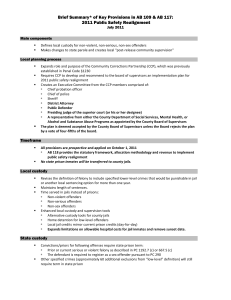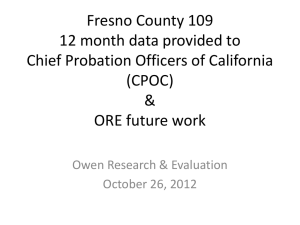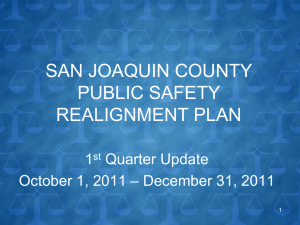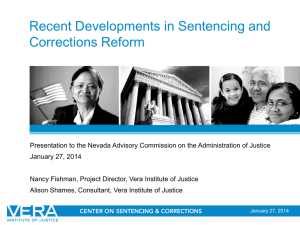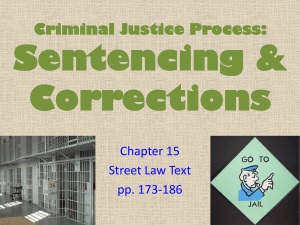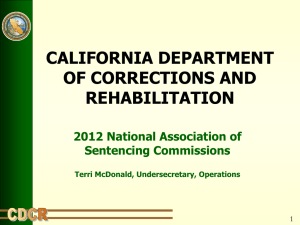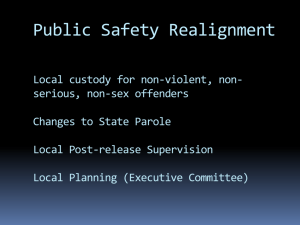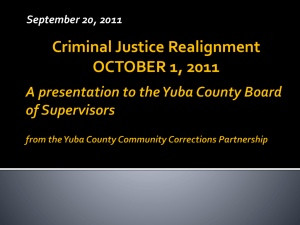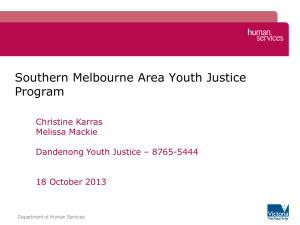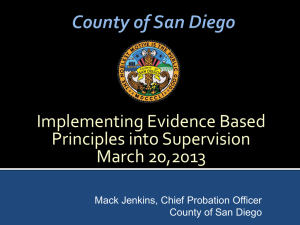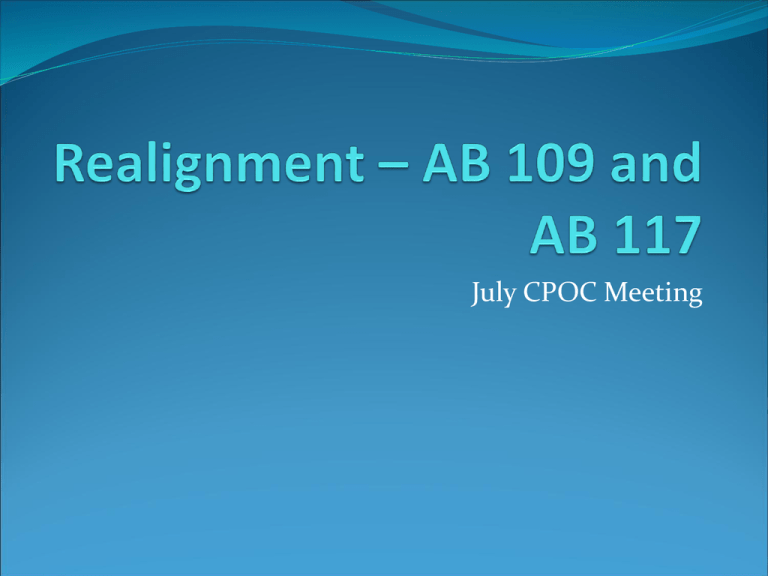
July CPOC Meeting
Key Changes to AB 109
AB 109 is modified by AB 117
Realignment is now operative on October 1, 2011
(budget also establishes the community corrections
grant program and funds it on this date)
All changes PROSPECTIVE (including credits) except
for CCP planning
“AB 109 Allocations” are intended to cover the non,
non, nons sentenced to local custody, post-release
community supervision, and parole violators stay in
county jail
Non, Non, Nons –
3
N
Who stays local:
Revises the definition of felony to include
certain crimes that are punishable in jail for
more than one year.
Time served in jails, probation, or alternative
custody instead of prisons:
Non-violent offenders
Non-serious offenders
Non-sex offenders
Options for
3
N at
Sentencing
Jail instead of prison for the same period of time
Felony probation
Jail, early release to alternative custody
Split sentence – imposed sentence of combined jail
time with the remainder on mandatory probation
Imposed sentences (everything but felony probation)
prison prior attaches
Split sentences cannot be longer than the original
sentence when combining custody and supervision
time.
Non, Non, Non Receiving Local Disposition
Options for
3
N after
Sentencing
Enhanced local custody and supervision tools:
Alternative custody tools for county jails
Home detention for low-level offenders
Local jail credits like current prison credits (Day-forday).
Counties may contract for beds:
With CDCR (costs still to be set)
With other counties
With public CCF’s (Community Correctional Facilities)
MAY NOT contract back parole revocations
State Prison Eligible
The following sentences must be served in state prison:
Prior or current serious or violent felony as described
in PC 1192.7 (c) or 667.5 (c)
The defendant is required to register as a sex offender
pursuant to PC 290
Excludes certain other specified crimes (now about 60)
Note: “excluded crimes” are those for which a
defendant can still be committed to state prison.
Post Release Community
Supervision (PRCS)
Who will be under local supervision:
Current non-violent , non-serious offenders (can have serious
or violent offenses in history)
Some Sex offenders
Former NRP’s
Who remains on State Parole:
3rd strikers
Individuals with a current violent or serious commitment
offense
High risk sex offenders as defined by CDCR
Mentally Disordered Offenders (MDO’s)
Anyone on parole prior to October 1, 2011
Post Release Community
Supervision (PRCS)
Board of Supervisors must designate the county
agency responsible to supervise PRCS and inform
CDCR by August 1, 2011
CDCR must notify counties who is being released at
least 30 days prior (however there will be more about
this process and information sharing)
Revocations will be handled by local courts starting
October 1, 2011
PRCS Supervision and Revocations
Supervision levels and case plan determined by
supervision agency
Statutory general conditions
Consider sending specific conditions to CDCR prior to
release
Graduated sanctions including flash incarceration at the
local level up to 10 consecutive days
Revocations capped at 180 days (jail only, no return to
prison)
May discharge as operation of law after six months
without violations
PRCS Administrative Process
AB 117 significantly narrows the courts’ involvement to only
the final revocation process
Courts will be authorized to appoint hearing officers for
the final revocation hearings
The supervising agency will have the authority to handle all
intermediate sanctions without court involvement, up to
and including flash incarceration
Must establish a review process for assessing and refining
conditions
AOC is to adopt forms and rules of court to handle the final
revocation and termination hearings
Modify conditions; revoke to jail for up to 180 days; refer to
reentry court
PRCS Discharge Process
Discharges by operation of law at the end of 3 years
May discharge after consecutive 6 months of no
violations
Must discharge after a continuous year served with no
violations
Courts WILL NOT be involved in the discharge process
for either PRCS or Parolees
Parole Violations
BPH will retain authority over parole until July 1, 2013
Violations will still be served in jail starting October 1,
2011
Same sanctions available to PRCS, flash incarceration
in the jail for up to 10 days
Revocations capped at 180 days
Only persons sentenced to a term of life can be
revoked back to state prison
Post July 1, 2013 the revocation process will work the
same for parolees as it does for PRCS
DJJ Future
DJJ – goes back to status quo, you can continue to send
wards to DJJ however there is a cost per ward of
125,000 that may “trigger” in the budget if revenues
don’t materialize
There will be another bill, to make all the necessary
statutory changes
There will be continued discussions through the
summer about the future of DJJ
Community Corrections
Partnerships (CCP)
AB 117 clarifies the composition and the powers of the Executive
Committee
New Composition:
CPO (chair)
Sheriff
Police Chief
DA
Public Defender
Judge (or his or her designee)
One appointment by the Board of Supv. of either DSS, MH, or ADP
The plan is deemed accepted unless rejected by BOS by a 4/5ths
vote
Brown Act
Planning Grants $100,000-$200,000 within the next 30 days
Board of State and Community
Corrections
July 1, 2012 CSA will be eliminated and replaced with
the BSCC
All CSA duties (except for CPOST) will go to the BSCC
and some CCCJ and Office of Gang Policy Violence
which are also eliminated
Moved out of CDCR – independent board
12 member board, chair is the Secretary of Corrections
and Vice Chair selected by board from Sheriff or CPO
appointments
Other members: 2 CPO’s; 2 Sheriffs; Adult Parole Div
Director; BOS; Police Chief; Public member; Judge; CBO
for adult programs; and CBO for juvenile programs

